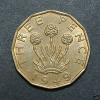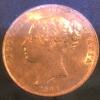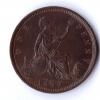Leaderboard
Popular Content
Showing content with the highest reputation on 10/18/2018 in all areas
-
2 points
-
It's a pity ebay don't offer a drop down menu that includes copies as a reason to report an item. I can't see a way to inform ebay that describes the problem, but I guess that is just the way they like it - no hassle and fees received.2 points
-
Here's a hypothesis that's indirectly related to what you're talking about. I'm posting it here because, well, a tributary deserves a tributary of its own. There are five interrelated variables that affect the coin market: Awareness, availability, rarity, popularity and price. Although the population of a particular variety is absolute, it's unknowable unless precise and accurate mintage figures are published and each of these specimens is accounted for. The perceived rarity of a coin is subject to change and, therefore, a variable. That said, there are degrees of probability of the order of magnitude of a coin's absolute population. Each of these five variables are truly interrelated in the sense that each influences all of the other four. Two examples: The availability of a coin is related to the quantity of a particular variety that's on the market at any one time and the frequency at which each specimen becomes available for sale. The variety's availability is influenced by its awareness within the collecting community, its collector value (market corrections when its perceived value to investors or collectors changes and more or fewer are listed for sale), its rarity and its popularity. The rarity of a coin is related to its absolute population and the portion of this figure to have been identified. The variety's rarity is influenced by its awareness within the collecting community, its collector value, its popularity and its availability, each of which will encourage collectors to seek out specimens. I haven't thought this through thoroughly, but if I don't write it down somewhere I'll forget about it. Feedback?2 points
-
2 points
-
1 point
-
The other 1939 has gone also. Sorry to interupt and i also like the designs of the crowns 😊. Pete.1 point
-
I don't know what the regular mail insurance limit is in the US, but suspect it will be aligned with this country where the maximum insured value is £250. Over that and you are using a courier (including Parcelforce) which is considerably higher, or if you have separate insurance, you can send it regular mail. Prices can escalate. If I want to send a higher value thing to the US with a courier, the price is in the £30 area, but can be more depending on value. For imports from the US to me, $30 is a minimum charge whichever auction house it comes from. They won't send it on a wing and a prayer as they are responsible for it getting to you, so arses will be covered.1 point
-
I think the 1936 is a rare coin, but not grossly overpriced like the 1934. Also, it is the only rare item in the otherwise extremely common 1936 denomination series.1 point
-
They are a super looking series, with undoubted coin charisma. Just give me the kudos.......1 point
-
I was fully aware of the buyer's premium, but $50 USD for postage and $10 USD for insurance was covered by some phrase to the effect of "postage may be higher for international destinations". For heaven's sake! The coin only weighs three grams! $35 USD wire charge? Hmm. I could ask them to consider using a more economical postal service, but don't like my chances. I'll certainly be challenging the wire charge, though.1 point
-
Can we keep the politics to the non-coin section of the forum. I came here to avoid thinking about it!1 point
-
Yes. They do add a rider after their distinctions for the 1925 halfcrown, which states;- "Always considered very rare - this may be rarer than some, but not as rare as 1923"1 point
-
Yes unfortunately i think it will be correct ,although yes the fees are high 😊 The commision of 20% plus if you convert to english pounds the £70 for the other bits and pieces. I think looking in Australia you dont have to pay any customs ,although i may be wrong and that would of bumped it up even more. I am sure the amount to pay will be broken down and will be exactly what it says in there terms. Unfortunately you will just have to pay them and one of those lessons most of us have learned at some point.1 point
-
Rarity can also be sub-divided into rarity by condition/grade. For example, a given coin can be relatively easy to access in grades up to say, VF, but disproportionately more difficult at EF+ and impossible in uncirculated with full lustre. Whereas others with roughly the same absolute population extant, will be easier to obtain in the very highest grades. Gouby does touch upon this scenario, but only briefly. A book which makes a much better fist of these rarity grade distinctions is "The standard catalogue of English milled coinage, silver, copper and bronze 1662 - 1972" , by the late Geoffrey M. Cope and P. Alan Rayner . From 1974, it unfortunately doesn't cover all varieties, but is well worth a read.1 point
-
Ouch! I would try and find a way to pay promptly, their terms appear fairly strict (though I have no personal experience of them) and I suspect any default would work out expensive in the long run. Can you not eliminate the wire fee by paying with PayPal, as a ‘gift’ if necessary? Even a standard PayPal fee would probably be cheaper than the wire charge. They give the sale price as $336, I presume this includes the buyers premium? Nice coin though. Jerry1 point
-
Mintages are definitely not the main determining factor in price, which for most things on this planet is supply and demand. A good example is the wreath crown where the vast majority of coins struck must still be extant, not having circulated to any large degree. In fact, these are likely to be the largest population of 20th century material surviving post-demonetisation where the numbers struck are close to the numbers extant. With no published die varieties to chase, it means the sales prices are quite clean and representative. Using high grade examples, with the exception of the 1934 with a mintage of 932 which regularly sell in the 3500 - 5000 range, all the others typically sell for 4-800. The two next lowest mintages with just under 2.5x this are the 1932 & 1936 which sell in the upper end of the range, but the others mostly sell in the 4-500 bracket. Based on mintages, the 1934 is clearly overpriced, or else the others are underpriced. Given the assumed correlation above between mintage vs extant, I suppose this gives us an approximate figure for the numbers of people collecting this issue. Demand for the rarest year (by mintage) is clearly buoyant based on prices, yet the number of examples coming to market is disproportionately large relative to the other mintages. They are always available. This I believe is due to collectors putting off purchasing a 1934 until relatively later in their collecting life due to the higher cost, and as a result will be retained for a shorter period of time than is the case for the other years, leading to them being resold quicker. The collector's perception of rarity is derived from the published figures published and it is this which drives the price, because it certainly isn't availability. The next two rarest years are probably a better indicator of demand. In my opinion, you see relatively fewer of these, and they command a small premium to the rest. The 4056 mintage for 1931 therefore appears to fully satisfy demand leading me to the assumption that the number of collectors is somewhere in the low thousands.I could be wrong, but don't think it is too wide of the mark. When it comes to varieties the waters are somewhat muddied, as they tend to only be collected by the broader population once they have been written down and referenced, and then only by a small minority of specialists. The majority of collectors will only ever want a type example. This leads to some stratospheric prices where only a handful are known, but the collector base is wide, but also leads to a rapidly reducing price subsequently once more examples become available due to the spread of knowledge and people actively seeking out the variety, e.g. the 1893/2 penny. That speaks volumes about attention to detail and the depth to which collectors actually study their coins, and raises the question of greed and avarice - but that's another discussion.1 point
-
Kev, You might find these images useful. They are the respective rarity scales used by Gouby and Freeman. First one is Gouby and second, Freeman. Apologies for quality, but book pages are a sod to get a decent pic of. Incidentally, Freeman has the F76 as R17, not R18. Although I think in reality it probably is R18.1 point
-
its there, Its worn, I have the Jamaican 1882 as well, worn but nothing where the H should be, but other details of similar depth are there.1 point



.jpg.59f7f7c5ad8ff67a70f8db9e7dffd413.thumb.jpg.0826c31400cad2e4de5fe0a6afd6fd8b.jpg)




